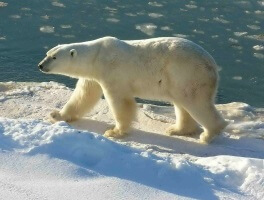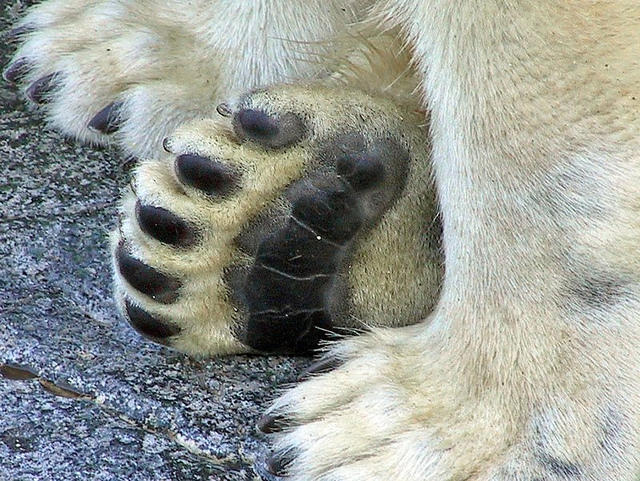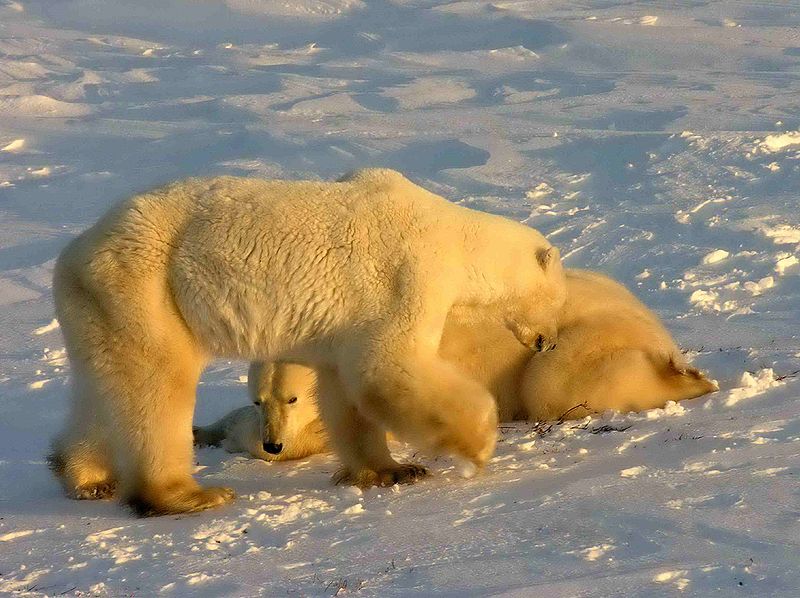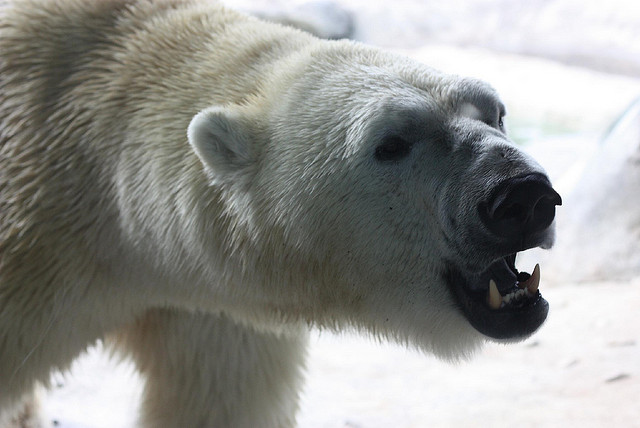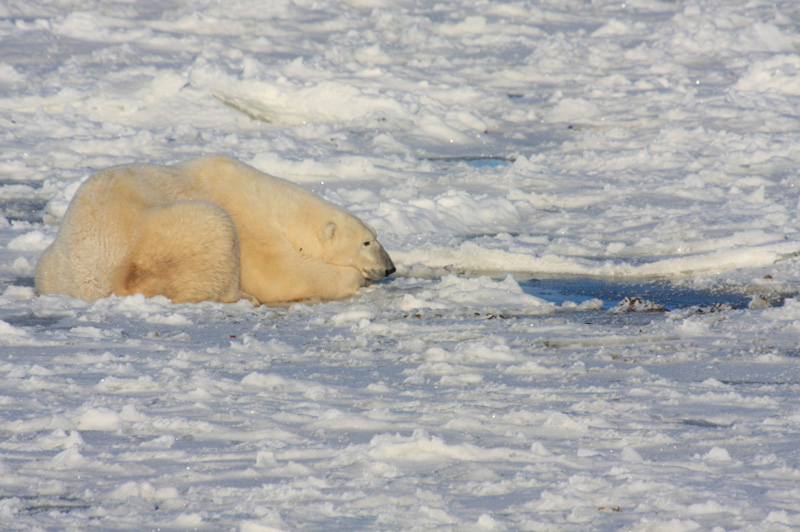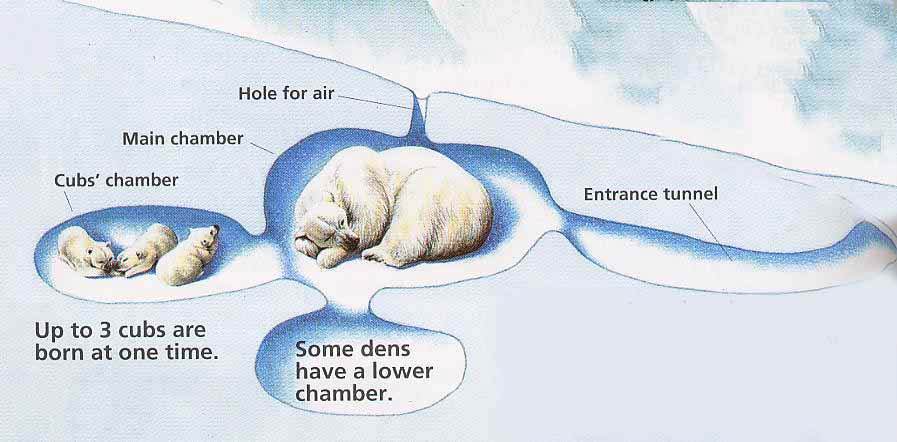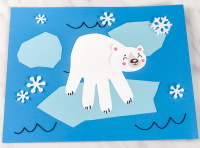Polar Bears--School-age
Polar Bears
Things to Know
Polar bears are the largest bear species in the world. The polar bear is a large white bear that lives in the the arctic region. The polar bear lives only in the Northern Hemisphere, on the arctic ice cap, and spends most of its time in coastal areas.
Marine Mammal
Polar bears live on land and ice. They are also fantastic swimmers. The polar bear is considered a marine mammal because of the characteristics they have for a marine lifestyle. They are made for swimming, they have tiny webs between their toes to help them swim. They have a thick layer of blubber to help them stay afloat. Their fur is two layers with the top layer making it easy to shake off the water after a swim and ice doesn't stick to their fur. The polar bear has excellent underwater vision. Also the polar bear's nose closes when it is underwater.
Polar bears may be active at any time of the day. They hunt in the day or at night. Polar bears tend to sleep more during the day than at night, probably because seals (the polar bear's main prey) are more active at night. The Polar bear is active year-round.
Where Do Polar Bears Live?
Polar bears live in the Arctic region of the north, and range in five counties: Greenland (Denmark), Norway, Russia, Canada, and Alaska (United States).
 Arctic map with the Arctic circle in blue.
Arctic map with the Arctic circle in blue.Polar bears are found throughout the Arctic Circle and adjacent land masses.
Polar bears are rare in areas north of 88°north latitude.
Polor Bear Bodies
Polar bears survive in a sub-zero climate because of the design of their bodies. They have thick fur which enables them to insulate themselves, small ears and a short stub-like tail to prevent heat loss, and insulating blubber which helps them to stay afloat and keep heat in.
The paws of a polar bear act like snowshoes. The paws are wide and covered with fur to help the polar bear from slipping on ice and snow. The thick black pads are covered with bumps to prevent slippage on ice. The sharp claws grip the ice.

